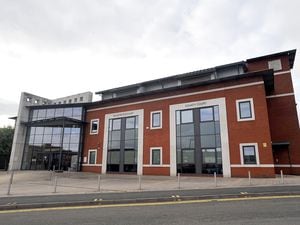Planning inspectors to consider solar farm evidence before decision
A decision on a proposed solar farm will be delayed as the planning inspector considers four days of public inquiry evidence.

The hearing was convened at Shirehall, Shrewsbury last week to hear an appeal against the decision of Shropshire Council to refuse planning for the 22-megawatt solar development in Kemberton, on green-belt land just outside Telford.
Shropshire Council was standing by the original decision of its planning committee in March 2023, which decided that the development would have an “unacceptably adverse impact” on green belt land in the east of the county.
The council had argued that the development would constitute “leapfrog” development”, bypassing green-belt planning limitations by missing out fields intended to form the boundary of development on the east side of Telford.
“In spatial planning terms that is problematic. It leaves open a parcel with development on both sides, leaving an undeveloped island of land between the appeal site and the built edge of Telford. That is also an example of untidiness or irregularity,” said planning authority barrister Sioned Davies.
In her closing submissions, she added that while the proposed development could deliver some benefits, those benefits would not be outweighed by the loss of green-belt and agricultural land.
“The harm arising from the spatial and visual aspects of openness, the harm to the purposes of the Green Belt, the other harm – particularly arising from the loss of agricultural land, are not outweighed by the generalised national need for solar deployment, the need in Shropshire, grid connection availability, and the biodiversity net gain which is said to be deliverable on this site,” she said.
However a robust defence from Swedish developer Vattenfall said the council had made a number of serious errors in its submissions, including misidentifying the parcel of land in the proposal as being one of the fields which formed the containing green-belt boundary of Telford.
They argued that a technical definition in government National Planning Policy Framework meant that preventing settlements from merging into one another should not have been be a consideration for the proposal.
“The council’s own green belt assessment confirms that the land between Telford and Kemberton does not engage the second green belt purpose because Kemberton is not a ‘town’. Indeed, the Assessment does not even characterise Kemberton as a village, but as a hamlet,” said Barrister Gwion Lewis, acting for the appellant.
“The council’s approach to the final planning balance has been discredited at the inquiry. The multiple errors of fact and understanding and the several accepted instances of illogical reasoning when seeking to weigh the material planning considerations in the planning balance make it impossible to agree with the Council’s approach to the question of very special circumstances.”
A decision will be made by government Planning Inspectors in due course.





